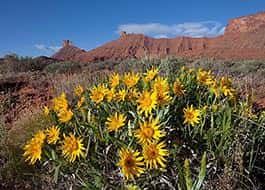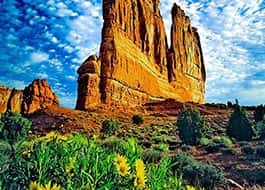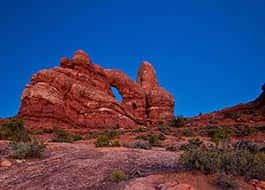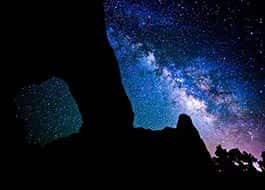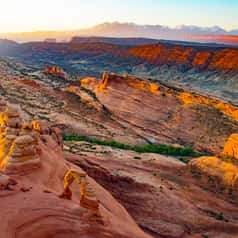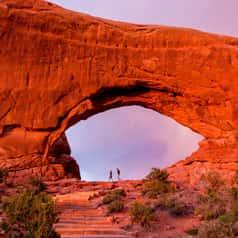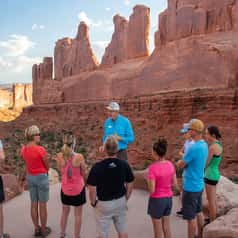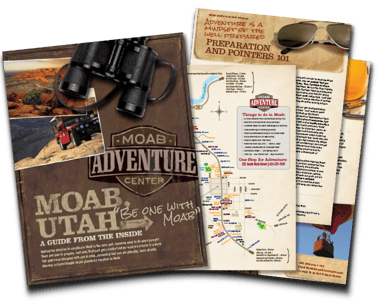Best Time of Day to Visit Arches National Park
The best time of day to visit Arches is in the morning or evening when the sunlight is low and accentuates the shadows and textures of the rock features. In these "golden" sunlight hours, the deep red and orange colors come alive. If you enter the park before 6:00 AM or after 5:00 PM, you can enter without the timed entry reservation ticket that's in place to help alleviate and disperse crowds during the day.
Ironically, the middle of the day is the most popular time to visit, but it provides the worst light. Arches will reward those who get up early for sunrise or stay there through the sunset hours. On a guided van tour, you can take advantage of these hours without much of the hassle.
Arches National Park in March
In March, you can expect Arches to be a little chilly and breezy with hints of spring color. Crowds will be far less present in March, making it a great time to get shots of vacant spaces. Additionally, in March, you have a good chance of seeing the white-capped snowy peaks of the LaSal mountains in the distance, contrasting with the desert colors in the foreground.
Arches National Park in April
April usually provides the best hiking weather in Arches and the Moab area. With the sun still not fully overhead, even at high noon, you can still see good shadows and contrast on the rock features for spectacular photos. The snow-capped LaSal peaks in the distance offer a beautiful contrast with the red rock. April often displays the best scenes of the desert in bloom, with cactus wildflowers dotting the landscape.
Arches National Park in May
Early May has all the advantages of April, with a little more warmth. As the month of May progresses toward June, both temperatures and crowds will increase, and cactus flowers will diminish. May is still a great month for hiking, even in the mid-day heat on most days. Be sure to bring water if you are doing any hiking.
June in Arches National Park
June may be the driest month to visit the park. That means clear blue skies and sunny weather. Mid-day heat in June, July, and August relegate good hiking to mornings and late afternoons. With the longest days of the year in June, the sunrise will come very early, and the sun's light may not fully fade to dark until after 9 PM. This extra time provides more opportunities for the perfect sunset photo.
July in Arches National Park
July brings more heat and crowds to the desert. However, July also brings the monsoon season. Brief thunderstorms usually only last a few minutes or so before moving on across the landscape. These clouds can make for dramatic lighting and interesting skies against the famed arches. The flat light of summer days doesn't provide the ideal time to visit the park. You'll want to plan your visits for the morning and evening hours.
August in Arches National Park
In early August, you will likely find the lingering remnants of monsoon season. Heat, crowds, and billowing clouds begin to fade in the park as August moves toward the fall season. This time of year, it's best to beat the heat of mid-day with a day rafting adventure and a visit to Arches in the evening sunset hours.
September and October in Arches National Park
Typically, these are the wettest months to visit Moab. Monsoon season ends as the summer temperatures begin to cool. These months provide some of the best times to visit the park. This "Indian Summer," as it is called, is especially enchanting in the southwest desert. The angle of sunlight offers shadows and contrasts for an experience like no other time of year in Moab. Cottonwood trees in Courthouse Wash are ablaze with the fall colors providing stunning views. Hiking is easy in these temperatures, however, the daylight hours are shorter.
November in Arches National Park
From November to February in the park, you will find snow on the red rock, icy trails, and frigid temperatures. You may be surprised to imagine snow piled up on these iconic desert features but Moab sits in the high desert just over 4,000 feet above sea level.



